Los Angeles Chinatown has always been a favorite destination for me in downtown Los Angeles. I also love that I can take the L.A. Metro Gold Line to Chinatown station. It stops at N. Broadway directly across from Central Plaza.
Watch the Parade Year of the Rabbit on Instagram
For more things to do and where to stay in Chinatown here.
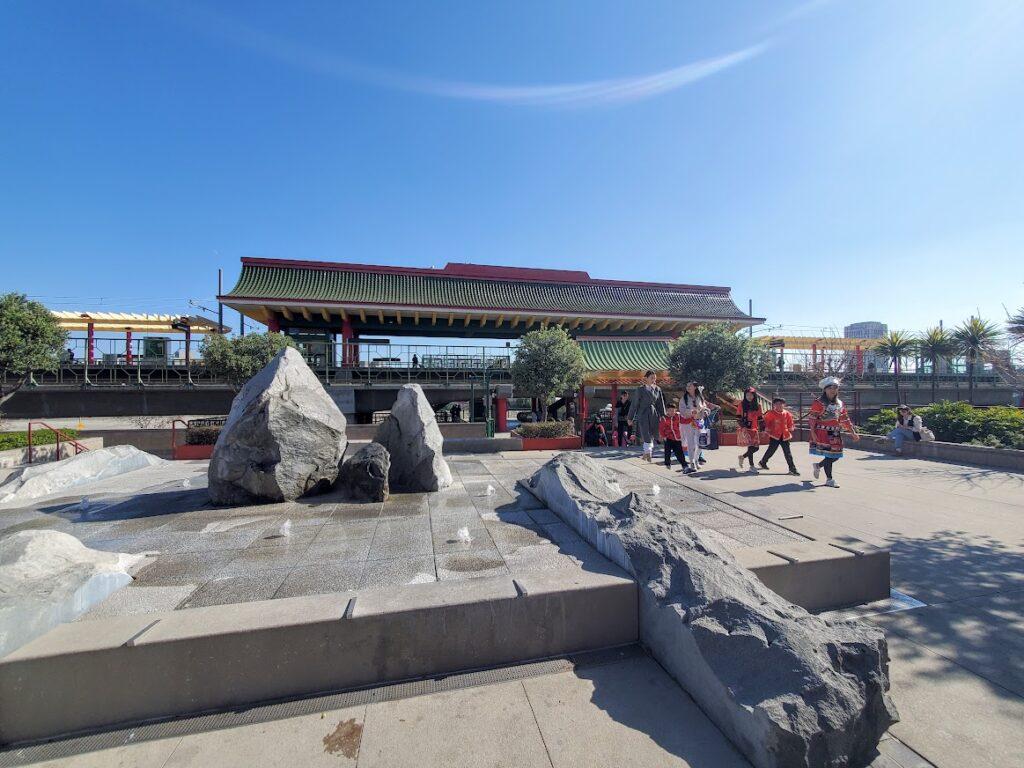
The neighborhood has been celebrating its annual Golden Dragon Parade for the Chinese Lunar New Year I was there to watch its 124th celebration during the Year of the Rabbit.
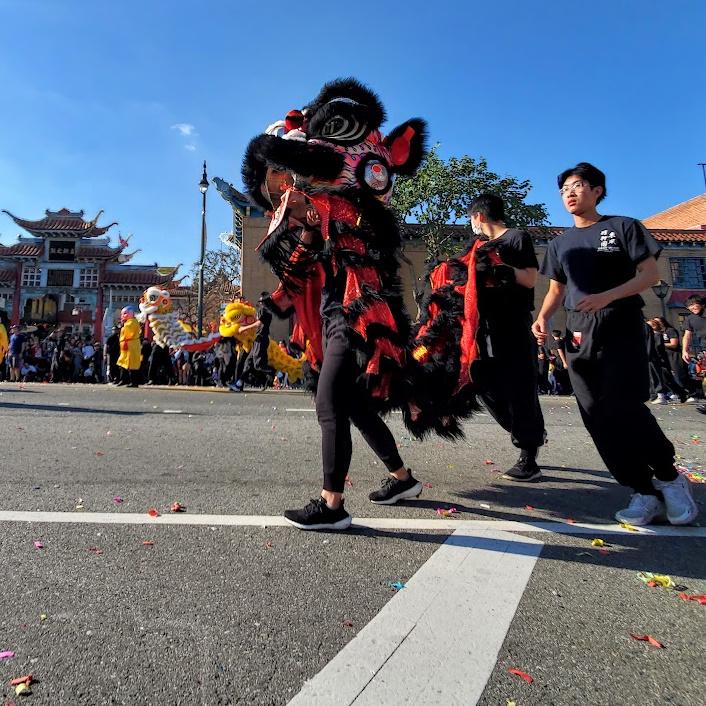
There were plenty of people on the street waiting for the parade to begin but I managed to find a spot to sit across from Central Plaza. It is the picturesque home to restaurants and curio shops as well as Chinese lodges, and guilds. Kids and adults blasted caps and cylinders full of confetti.
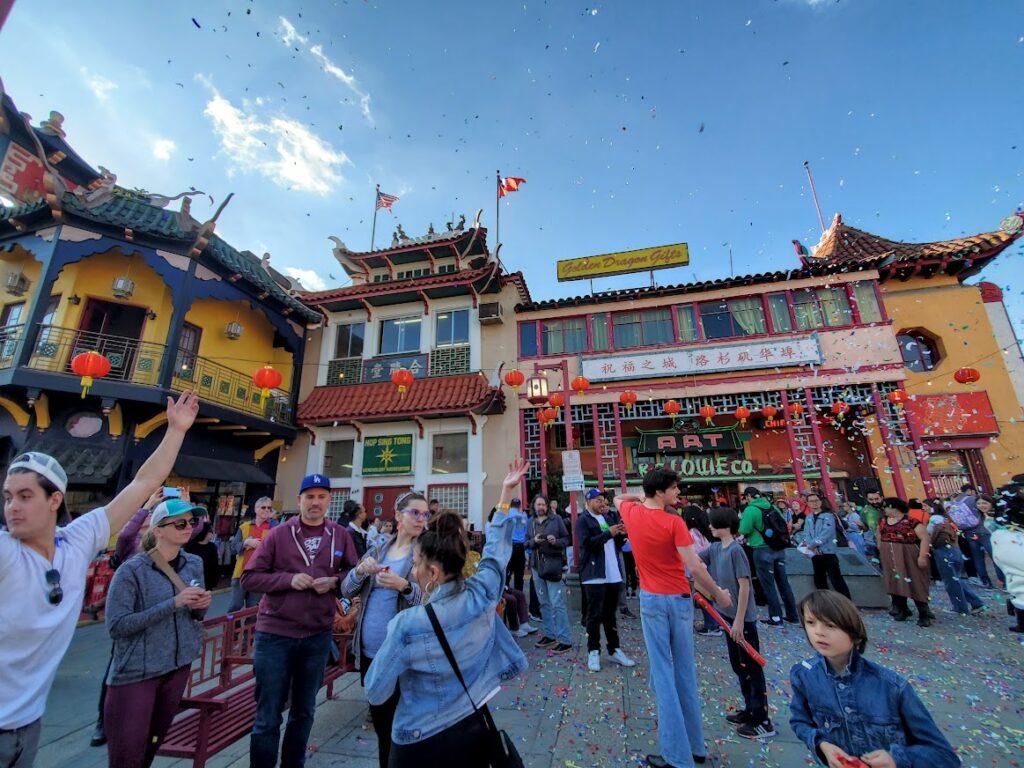
Pop-ups were set up to provide Chinese food to the partyers and there were booths selling everything under the sun.
Central Plaza
Central Plaza in Chinatown is located between Broadway and Hill Street near College St. Its buildings were constructed in 1938 to replace Old Chinatown which was located where Los Angeles Union Station is now.
The designers were Erle Webster and Adrian Wilson, who were not Chinese as an ode to Hollywood and as a version of Shanghai with pagoda-shaped roofs, bright colors, and fanciful carvings.
Red lanterns are strung from the rooftops and murals decorate the walls of the plaza making it a prime photo spot for tourists and Instagrammers. You can find a statue of martial artist Bruce Lee, as well as Dr. Sun Yat-sen.
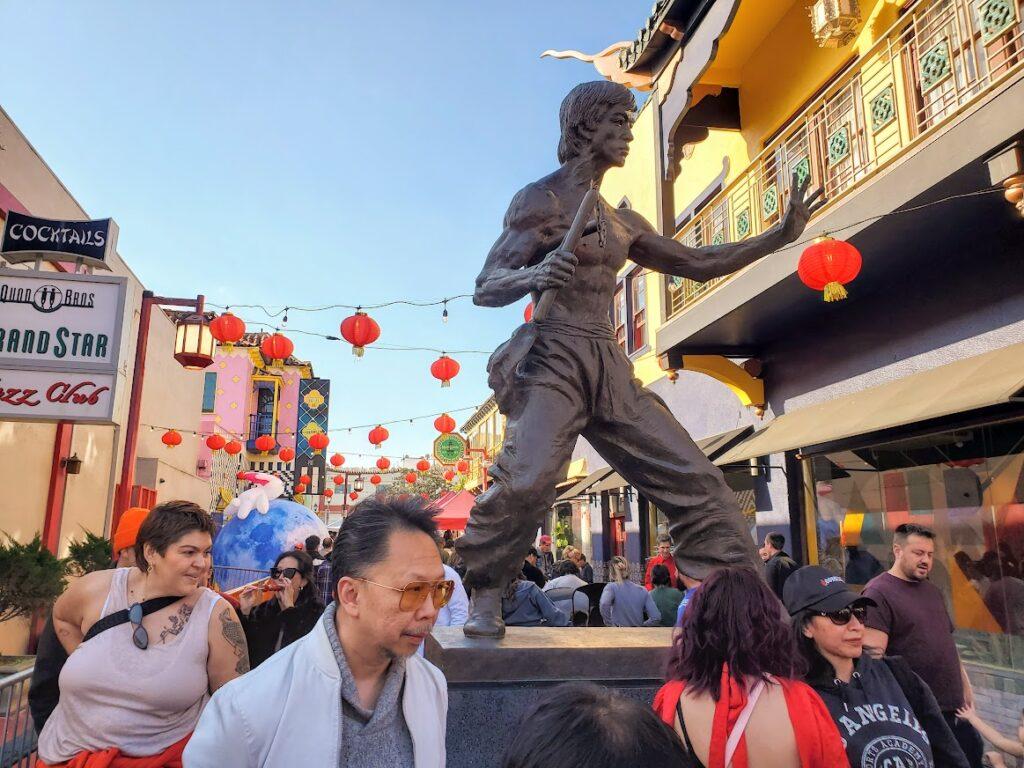
Although it was built to attract tourists, the neighborhood is also the residence and gathering place for members of the Chinese community. Chinatown’s Chamber of Commerce and other local organizations host traditional and cultural events throughout the year that includes the Lunar New Year Golden Dragon Parade, and the Autumn Moon Festival.
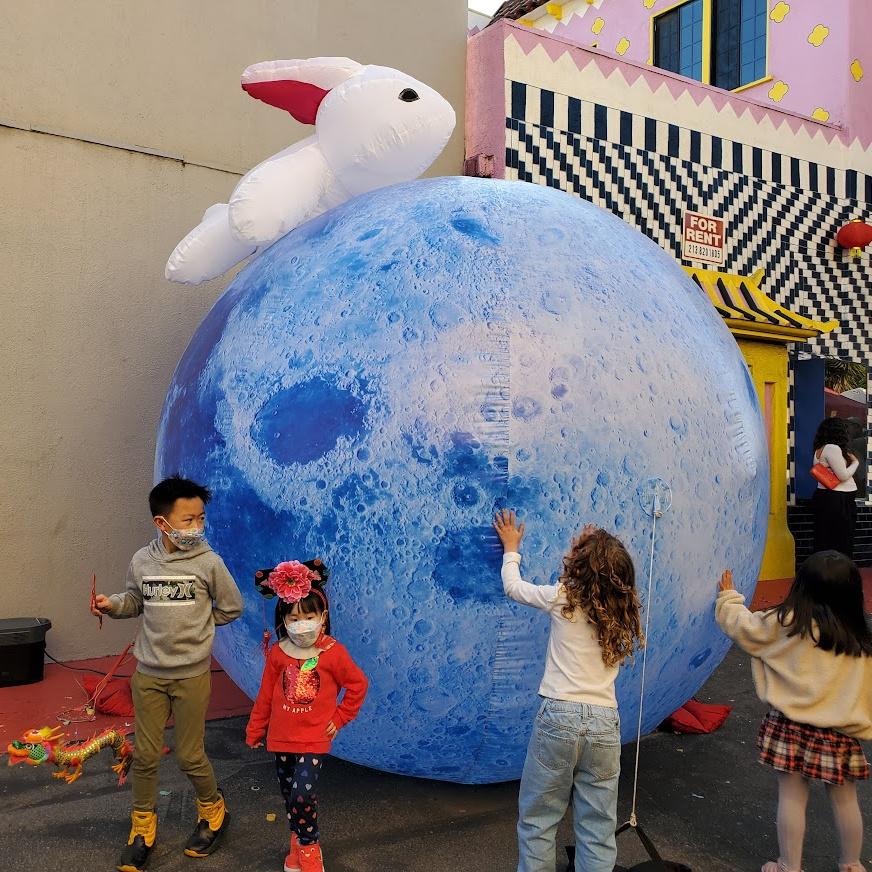
A brief history of the neighborhood
The Chinese came to California during the Gold Rush Days and many settled into what is now San Francisco’s Chinatown. Some of the immigrants headed South to the Los Angeles area to work for the railroad, on farms, or as laundrymen starting in 1852.
Those who came to Los Angeles gathered and lived near a short alley called Calle de los Negros (Street of the Dark-Hued Ones). They faced fierce racial discrimination during the late 19th century and early 20th century which resulted in riots and murders.
Some residents started productive businesses and restaurants there and the area expanded East. By 1890 – 1910 it had grown to 15 + streets, alleys, and 200 buildings that included a Chinese Opera Theatre, temples, and facilities for Chinese organizations.
Chinatown also had a dark side that was fraught with opium dens, hustlers, and prostitutes who provided “entertainment” for travelers passing through.
In 1931, the Supreme Court ruled that the area be condemned to make way for the construction of Union Station. Socialite and philanthropist Christine Sterling, took it upon herself to fund a project called China City near Olvera Street. She envisioned it as a Hollywood-style attraction for tourists getting off the train.
Chinese restaurants in the area known as Chop Suey Houses began to flourish as well as curio shops. Local merchants and restaurant owners led by a visionary businessman Peter SooHoo funded the construction of New Chinatown which was to be owned and controlled solely by Chinese Americans.
They competed with China City which also provided jobs for Chinese Americans. China City was completed 3 weeks before New Chinatown in 1938. It was popular and attracted crowds but had a mysterious fire in February of 1939 and another one in 1948 which it never recovered from.
New Chinatown survived and is what exists today.
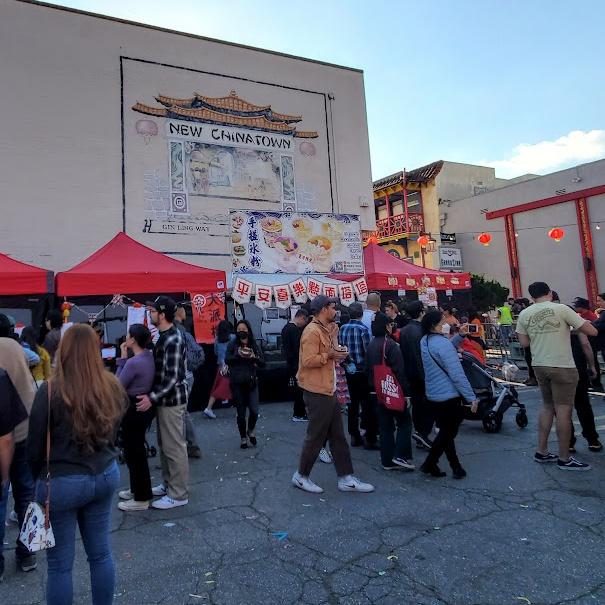
Things to do in Los Angeles Chinatown
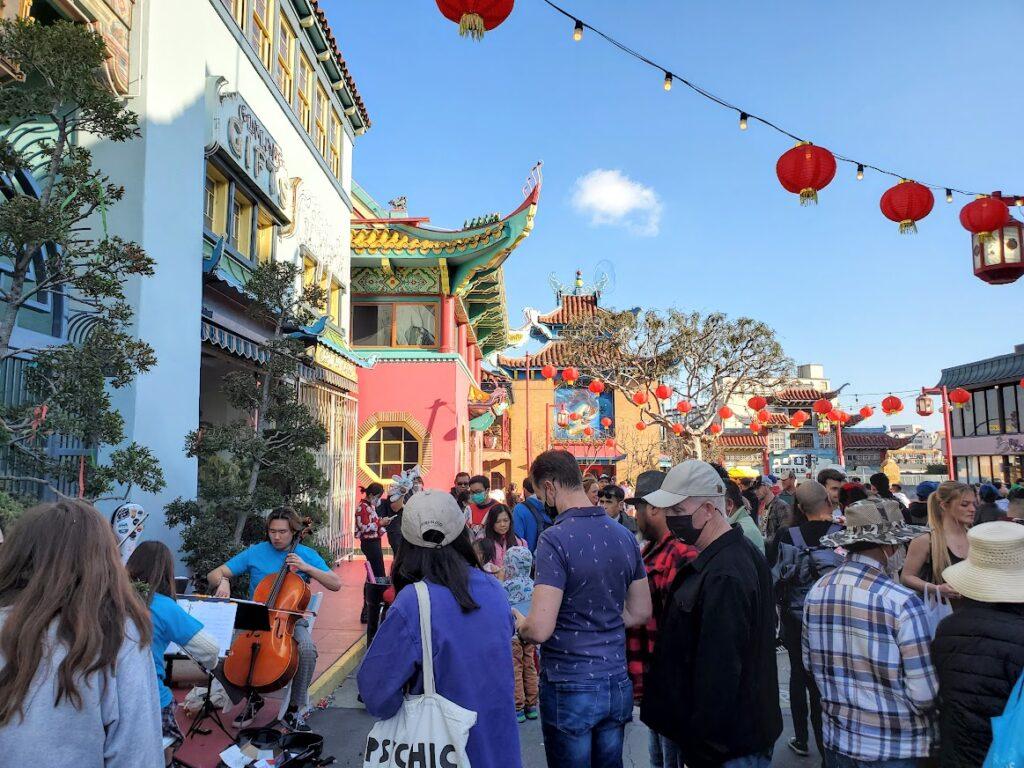
Chinatown is a wonderful place to find authentic Chinese food with stiff competition from Monterey Park. You will also find stores that sell souvenirs, Chinese porcelain and art, books, Chinese food supplies, and herbs.
Wonder Bakery and Phoenix Bakery are must-stop locations for Chinese desserts and other baked goods.
Far East Plaza at 727 N. Broadway is a more modern façade. It is a multi-level ethnic food hall where you can find shops and restaurants.
For a lovely tea experience, stop at Steep on 970 N. Broadway in the China Cultural Center, where you can enjoy traditional Chinese tea, cocktails, and snacks in a modern setting.

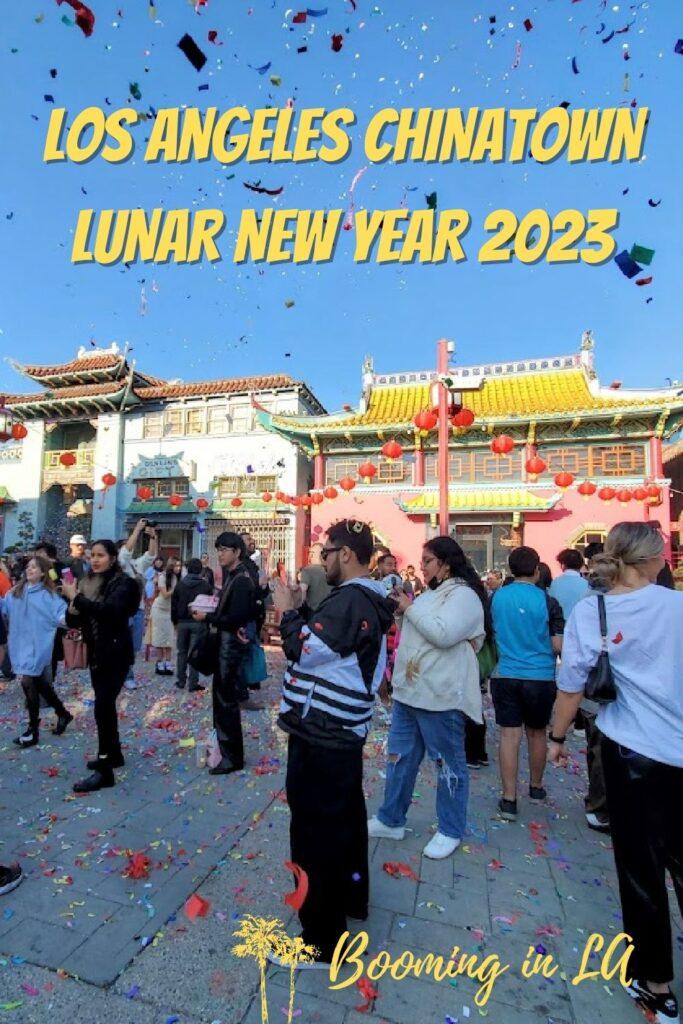

Can you be more specific? Are you talking about the Instagram reel? I just checked it and it worked. It could be a country ban.